
Might and Magic is a series of role-playing video games from New World Computing, which in 1996 became a subsidiary of The 3DO Company. The original Might and Magic series ended with the closure of the 3DO Company. The rights to the Might and Magic name were purchased for US$1.3 million by Ubisoft, which "rebooted" the franchise with a new series with no apparent connection to the previous continuity, starting with the games Heroes of Might and Magic V and Dark Messiah of Might and Magic.
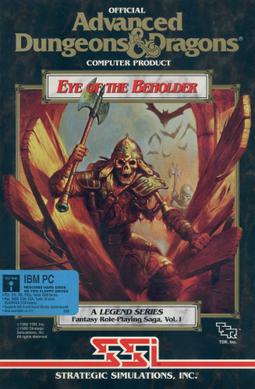
Eye of the Beholder is a role-playing video game for personal computers and video game consoles developed by Westwood Associates. It was published by Strategic Simulations, Inc. in 1991, for the MS-DOS operating system and later ported to the Amiga, the Sega CD and the SNES. The Sega CD version features a soundtrack composed by Yuzo Koshiro and Motohiro Kawashima. A port to the Atari Lynx handheld was developed by NuFX in 1993, but was not released. In 2002, an adaptation of the same name was developed by Pronto Games for the Game Boy Advance.

Might and Magic Book One: Secret of the Inner Sanctum is an early role-playing video game, first in the popular and influential Might and Magic franchise. It was released in 1986 as New World Computing's debut, ported to numerous platforms and re-released continuously through the early 1990s.
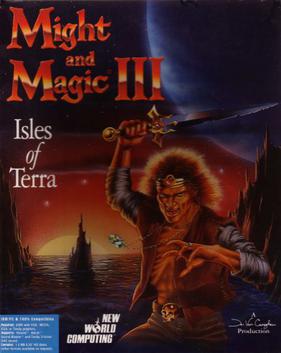
Might and Magic III: Isles of Terra is the third game in the role-playing video game series Might and Magic. Released in 1991, it is the predecessor to Might and Magic IV: Clouds of Xeen and the sequel to Might and Magic II: Gates to Another World. A Sega Genesis version was developed, but never released.

The Bard's Tale II: The Destiny Knight is a fantasy role-playing video game created by Interplay Productions in 1986. It is the first sequel to The Bard's Tale, and the last game of the series that was designed and programmed by Michael Cranford.
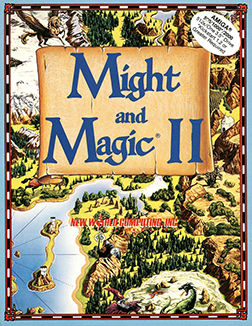
Might and Magic II: Gates to Another World is a role-playing video game developed and published by New World Computing in 1988. It is the sequel to Might and Magic Book One: The Secret of the Inner Sanctum.

Might and Magic V: Darkside of Xeen is a science fantasy role-playing video game published and developed for multiple platforms by New World Computing in 1993. Based on the Might and Magic III: Isles of Terra game engine, it is the fifth game in the Might and Magic series, and is a direct sequel to Might and Magic IV: Clouds of Xeen, concluding the story arc started in the original Might and Magic Book One: The Secret of the Inner Sanctum.

New World Computing, Inc. was an American video game developer and publisher founded in 1984 by Jon Van Caneghem, his wife, Michaela Van Caneghem, and Mark Caldwell. It was best known for its work on the Might and Magic role-playing video game series and its spin-offs, especially Heroes of Might and Magic. The company was purchased by and became a division of The 3DO Company on July 10, 1996 from NTN Communications, after NTN purchased New World Computing for $10 million in stock.
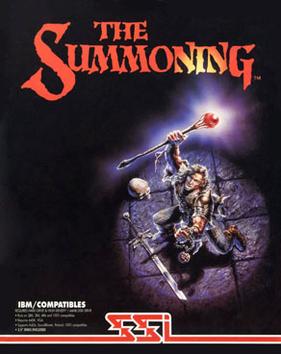
The Summoning is an isometric-view fantasy role-playing video game developed by Event Horizon Software and published by Strategic Simulations in 1992.

J.R.R. Tolkien's The Lord of the Rings, Vol. I is a role-playing video game published by Interplay Productions. It is an adaptation of The Fellowship of the Ring by J. R. R. Tolkien, being the first volume in The Lord of the Rings. The game was released in 1990 for DOS, in 1991 for the Amiga and PC-98, and in 1992 for the FM Towns. It was followed by J.R.R. Tolkien's The Lord of the Rings, Vol. II: The Two Towers. It was originally designed for the Commodore 64, but the production team switched to the newer platforms. The game was designed by Troy A. Miles, Scott Bennie, Jennell Jaquays, and Bruce Schlickbernd. For the later versions, the cutscenes are taken from the 1978 Lord of the Rings film directed by Ralph Bakshi.

The Magic Candle: Volume 1 is a role-playing video game designed by Ali Atabek and developed and published by Mindcraft in 1989.

Wizardry V: Heart of the Maelstrom is the fifth scenario in the Wizardry series of role-playing video games. It was published in 1988 by Sir-Tech for the Commodore 64, Apple II, and IBM PC compatibles. A port for the Super Famicom and FM Towns was later developed and published by ASCII Entertainment in Japan. Wizardry V was released in the US for the Super NES by Capcom in 1993, and subsequently re-released for the Satellaview subsystem under the name BS Wizardry 5.
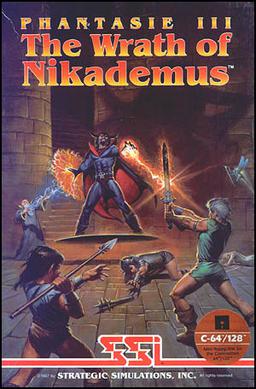
Phantasie III: The Wrath of Nikademus is the third video game in the Phantasie series.

Champions of Krynn is role-playing video game, the first in a three-part series of Dragonlance Advanced Dungeons & Dragons "Gold Box" games. The game was released in 1990. The highest graphics setting supported in the DOS version was EGA graphics. It also supported the Adlib sound card and either a mouse or joystick.

Death Knights of Krynn is the second in a three-part series of DragonlanceAdvanced Dungeons & Dragons "Gold Box" role-playing video games, published by Strategic Simulations. The game was released in 1991.

Knights of Legend, released by Origin Systems in 1989, is a fantasy role-playing video game.

Crusaders of Khazan is a computer adaptation of the tabletop role-playing game Tunnels and Trolls, developed and published by New World Computing in 1990 for DOS, FM Towns, PC-88 and PC-98. The game is available from Flying Buffalo and in Fiery Dragon's Tunnels and Trolls 30th Anniversary Edition. The game was an international production, designed and directed in the US but programmed in Japan.
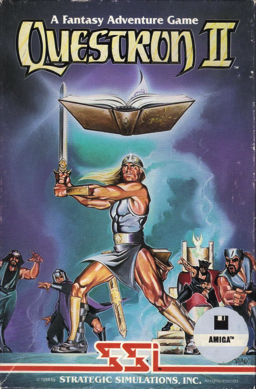
Questron II a 1988 role-playing video game published by Strategic Simulations for the Apple II, Apple IIGS, Atari ST, Commodore 64, IBM PC, and Amiga. It is the sequel to 1984's Questron. The story and original design is credited to Quest Software, the programming and artwork is credited to Westwood Associates.

Realms of Darkness is a fantasy video game developed by Strategic Simulations and released in 1986. It was developed for the Apple II and Commodore 64.




















